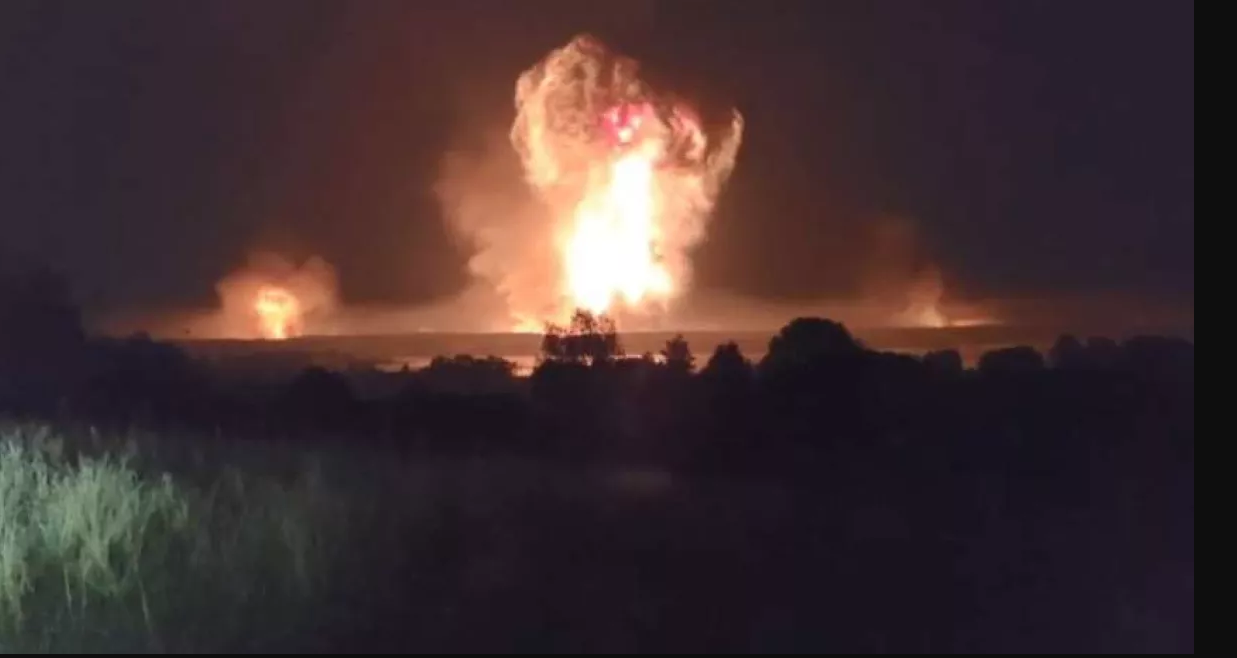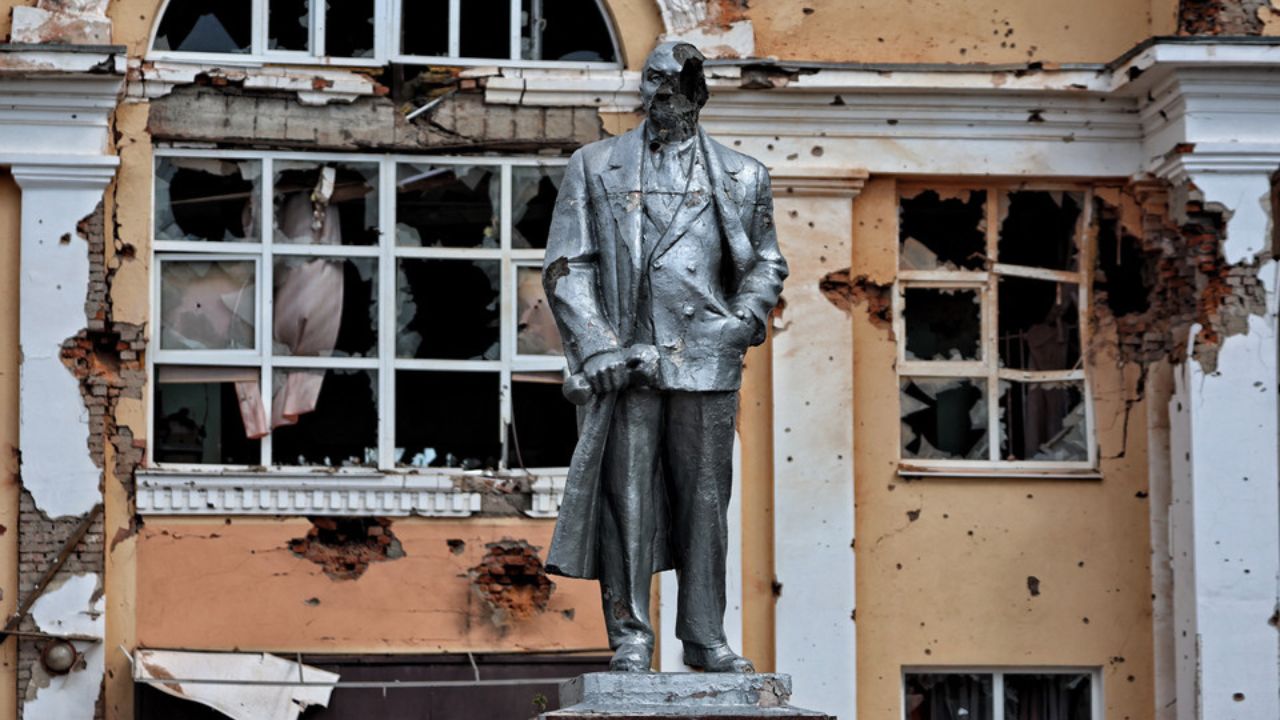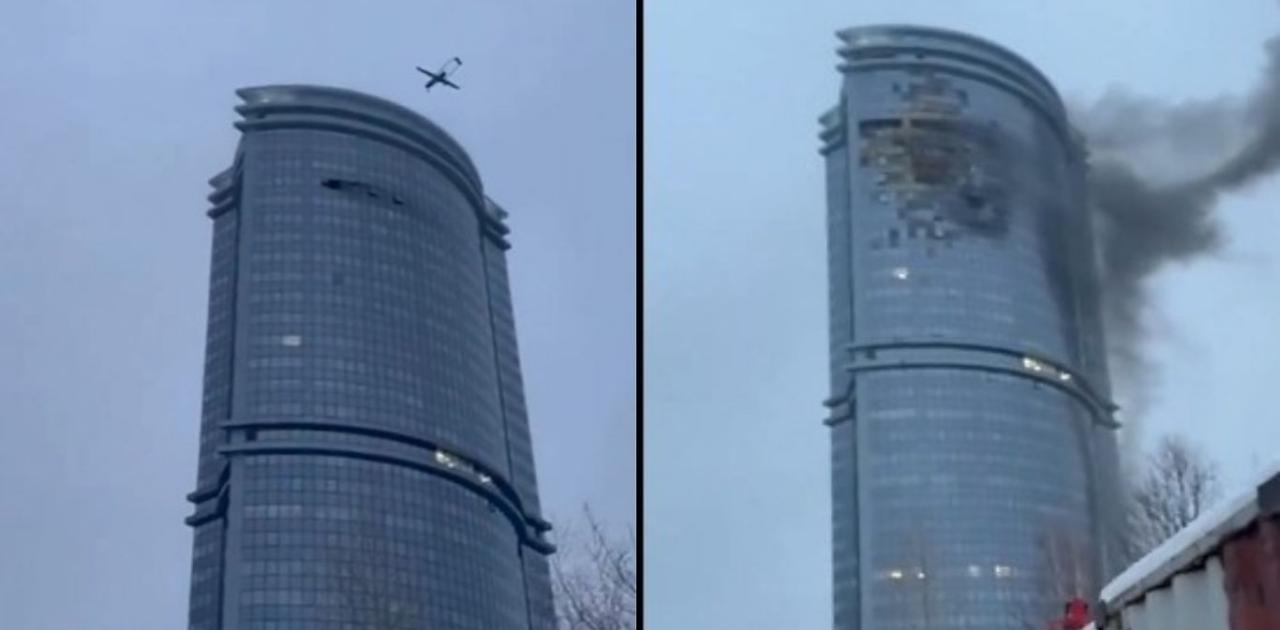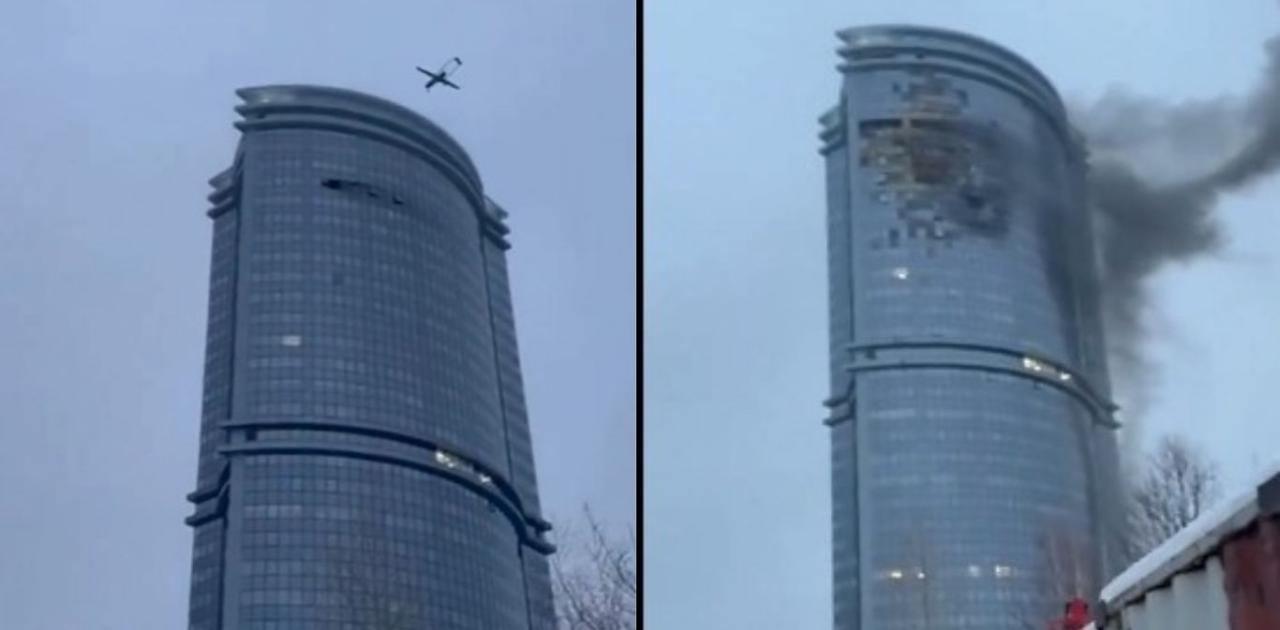Kazan drone attack: This incident presents a compelling case study in modern warfare and urban security. The alleged attack raises critical questions about drone technology, national security vulnerabilities, and the evolving landscape of conflict. This analysis delves into the specifics of the event, examining the technological aspects of the attack, its security implications, the political and social ramifications, and the legal challenges it poses.
We will explore the potential types of drones involved, the methods of deployment, and the technological hurdles overcome to execute such an operation. Further, we will analyze the response to the incident, comparing it to similar events globally and identifying potential improvements to security measures. The investigation and potential legal proceedings will also be examined, along with the broader political and social impacts on Kazan and international relations.
The Kazan Drone Attack: An Analysis
The alleged drone attack on Kazan, Russia, presents a complex event demanding a multifaceted examination. This analysis delves into the technological, security, political, legal, and social ramifications of the incident, offering a comprehensive overview of its various aspects. While precise details surrounding the event remain under investigation, the available information allows for a reasoned assessment of its implications.
The Event: Kazan Drone Attack Overview

Reports emerged of a drone attack targeting Kazan on [Insert Date], at approximately [Insert Time]. Initial reports suggested multiple drones were involved, although the exact number remains unconfirmed. The incident reportedly caused damage to [Insert specific location/building(s)], resulting in [Insert reported casualties and level of injuries]. Subsequent updates from official sources provided conflicting information, highlighting the complexities of verifying details in a rapidly evolving situation.
Further investigations are needed to fully understand the nature and scale of the attack.
| Date | Time | Location | Reported Damage | Casualties |
|---|---|---|---|---|
| [Insert Date] | [Insert Time] | [Insert Specific Location(s)] | [Insert Specific Damage e.g., Building damage, infrastructure disruption] | [Insert Number and Type of Casualties e.g., X injured, Y fatalities] |
Technological Aspects of the Attack
The drones potentially used in the attack could range from commercially available models modified for offensive purposes to more sophisticated, custom-built devices. Smaller drones offer greater maneuverability and stealth, while larger drones can carry heavier payloads, potentially including explosives or incendiary devices. Deployment methods could involve launching from various locations, including nearby buildings, vehicles, or even launched from a greater distance.
Control mechanisms might utilize GPS coordinates, pre-programmed flight paths, or real-time remote control, depending on the sophistication of the technology and the attacker’s capabilities.
Technological challenges involved in such an attack include ensuring the drones’ successful navigation to the target, overcoming countermeasures such as anti-drone systems, and precisely delivering payloads while avoiding detection. The complexity increases exponentially with the distance of the launch point from the target and the sophistication of the security measures in place.
A hypothetical scenario: An attacker might utilize a swarm of small, commercially available drones, modified with improvised explosive devices, launched from multiple, dispersed locations. The drones would utilize GPS coordinates for navigation and pre-programmed flight paths to avoid detection, converging on the target simultaneously.
Security and Defense Implications
The alleged attack highlights potential vulnerabilities in Kazan’s security infrastructure, particularly regarding drone detection and defense systems. The response to this incident can be compared and contrasted with similar events in other locations, revealing both best practices and areas for improvement. For example, the speed and effectiveness of the response might be compared to incidents in Kyiv or other cities that have experienced similar attacks.
This comparison could reveal shortcomings in early warning systems, response protocols, and resource allocation.
- Enhance drone detection systems using radar, acoustic sensors, and AI-powered image recognition.
- Implement a comprehensive network of anti-drone measures, including jamming technology and net-based capture systems.
- Develop robust response protocols for coordinating emergency services and security forces.
- Invest in training and education for security personnel to effectively counter drone threats.
- Strengthen collaboration between civilian and military agencies to enhance situational awareness and response capabilities.
Political and Social Ramifications

The potential political motivations behind a drone attack in Kazan are numerous and complex. The incident could be intended to destabilize the region, demonstrate a capability to target key infrastructure, or send a message to the government. The impact on public perception of security and safety is likely to be significant, potentially leading to increased anxiety and a demand for enhanced security measures.
Social consequences could include heightened tensions, increased scrutiny of security protocols, and public discussions about national security. If the attack were attributed to a foreign entity, it could significantly escalate international tensions and strain relations between involved nations.
For instance, an attribution to a specific nation-state could trigger retaliatory measures and deepen existing geopolitical rivalries, potentially leading to diplomatic standoffs or even armed conflict. The impact would depend heavily on the geopolitical context and the international response to the event.
Investigative and Legal Aspects
The investigative process would likely involve a multi-agency approach, including law enforcement, intelligence services, and potentially international cooperation. The investigation would aim to identify the perpetrators, determine their motives, and reconstruct the events leading up to the attack. Gathering evidence, including drone wreckage, flight data, and witness testimonies, would be crucial. Legal challenges could arise from jurisdictional issues, the complexity of proving intent, and the need to navigate international legal frameworks.
A hypothetical legal framework could include stricter regulations on drone ownership and operation, increased penalties for malicious use of drones, and enhanced international cooperation to prosecute cross-border drone attacks. A possible legal strategy for the prosecution could focus on presenting evidence of the drone’s trajectory, payload, and the attacker’s communication records. The defense might challenge the evidence’s admissibility or argue lack of intent, depending on the available information.
Visual Representation of the Event

A hypothetical image depicting the aftermath might show damaged buildings, emergency responders attending to casualties, and debris scattered across the scene. The visual elements would convey a sense of chaos and destruction, eliciting emotions of fear, shock, and sadness. The image’s emotional impact would be heightened by the presence of injured individuals and the scale of the damage.
A hypothetical image showing the drone’s trajectory would depict a flight path originating from an undisclosed location, potentially outside the city limits. The trajectory would illustrate the drone’s evasion maneuvers and its approach to the target, emphasizing the attacker’s planning and execution. The image would also show the point of impact, reinforcing the precision of the attack.
The recent Kazan drone attack highlights the vulnerability of civilian areas to unmanned aerial vehicles. This incident, while geographically distant, prompts reflection on similar technological failures; for instance, the issues experienced during the orlando drone show malfunction underscore the importance of robust safety protocols and reliable technology in drone operations. Ultimately, both events emphasize the need for improved drone regulation and oversight to prevent future incidents.
A hypothetical image of the drone itself might show a relatively small, commercially available quadcopter, modified with additional components. The image would highlight its key features, such as its propulsion system, camera, and potentially a compartment for carrying a payload. The image would subtly indicate the ease of modifying such drones for malicious purposes.
The alleged Kazan drone attack serves as a stark reminder of the evolving threats to urban security in the 21st century. The incident highlights the need for enhanced drone detection and defense systems, improved security protocols, and a robust legal framework to address the challenges posed by this emerging form of warfare. Further investigation and analysis are crucial to fully understand the motivations behind the attack and to implement effective countermeasures to prevent similar incidents in the future.
The recent drone attack on Kazan highlights the escalating use of unmanned aerial vehicles in conflict. Understanding the technology behind these attacks is crucial, and examining the capabilities of various drone manufacturers, such as those offering advanced systems like sky elements drones , provides valuable insight. This analysis can help in developing better countermeasures against future drone-based threats to civilian areas like Kazan.
The international community must also collaborate to establish global standards and regulations for the responsible use of drone technology.
Quick FAQs: Kazan Drone Attack
What were the reported motivations behind the Kazan drone attack?
The recent drone attacks on Kazan highlight the increasing vulnerability of civilian infrastructure to unmanned aerial vehicles. Understanding the capabilities of such technology is crucial, and resources like the cobequid pass camera footage, which showcases advanced drone surveillance capabilities, offer valuable insights into potential threat vectors. Analyzing these advancements helps in developing effective countermeasures against future attacks like those seen in Kazan.
The motivations remain under investigation. Speculation ranges from political dissent to criminal activity, with no definitive conclusion reached yet.
What type of damage was sustained?
The extent of damage varies depending on the source, ranging from minor property damage to more substantial structural damage, depending on the accuracy and nature of the attack.
What is the current status of the investigation?
The investigation is ongoing, and details are limited due to the sensitivity of the matter. Official updates are expected to be released as they become available.
